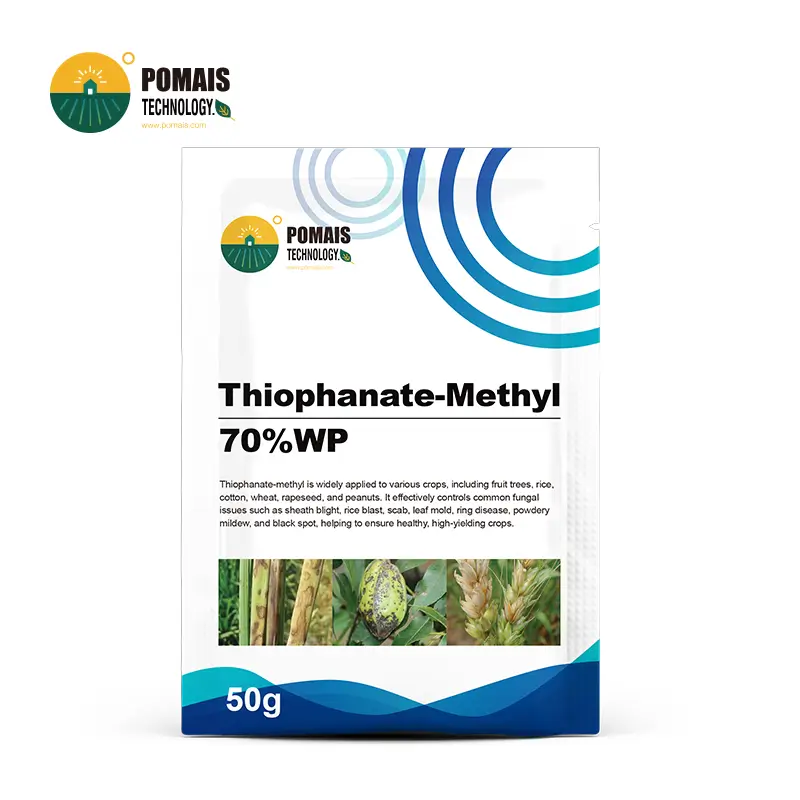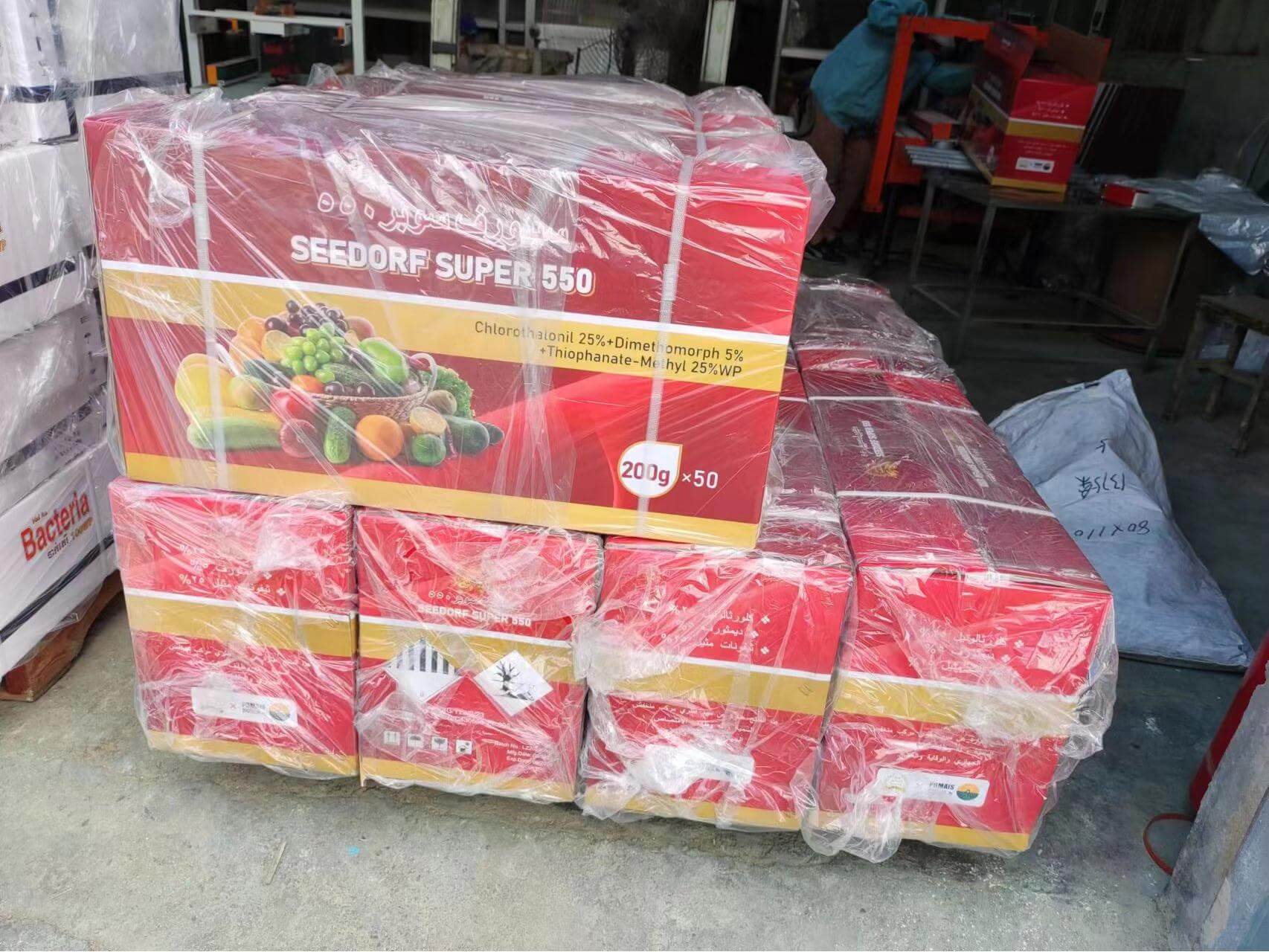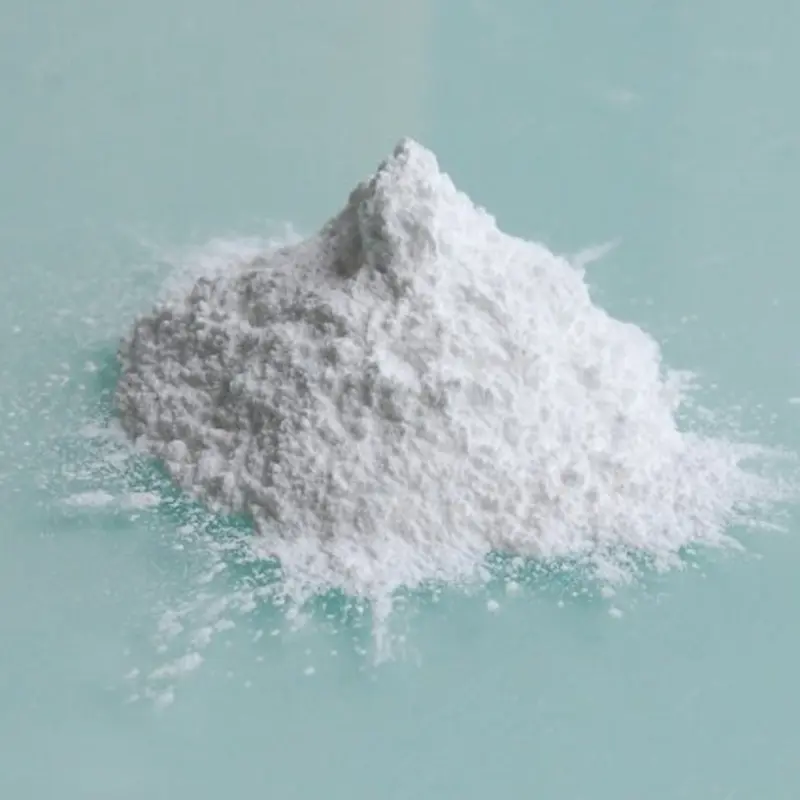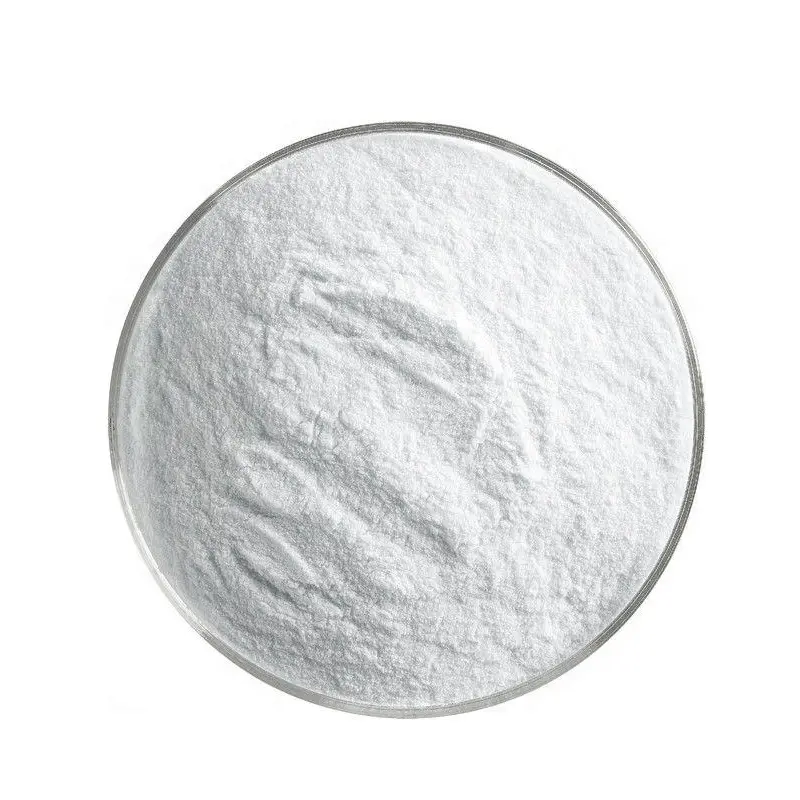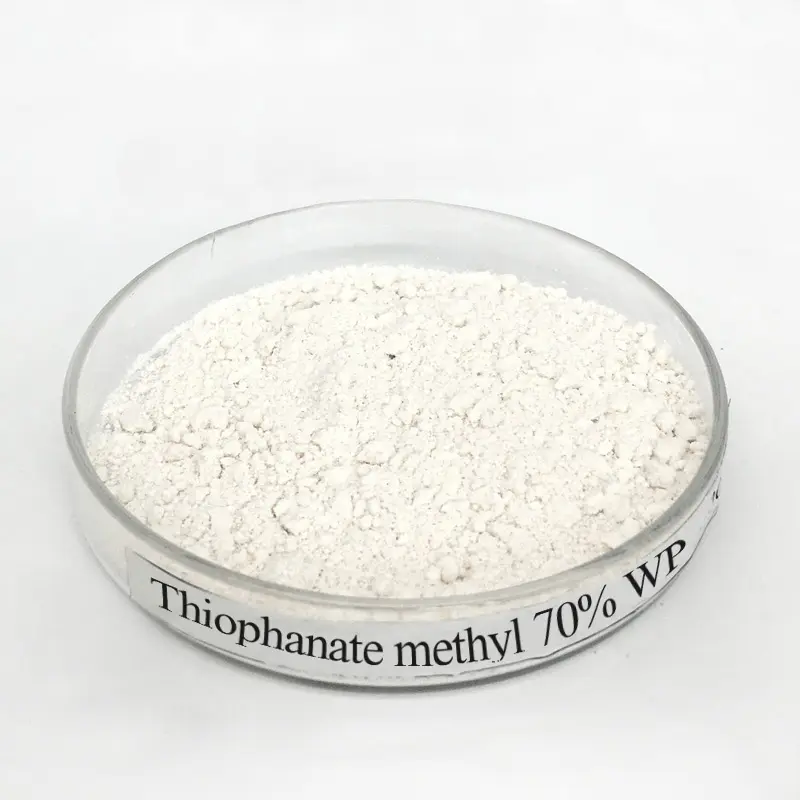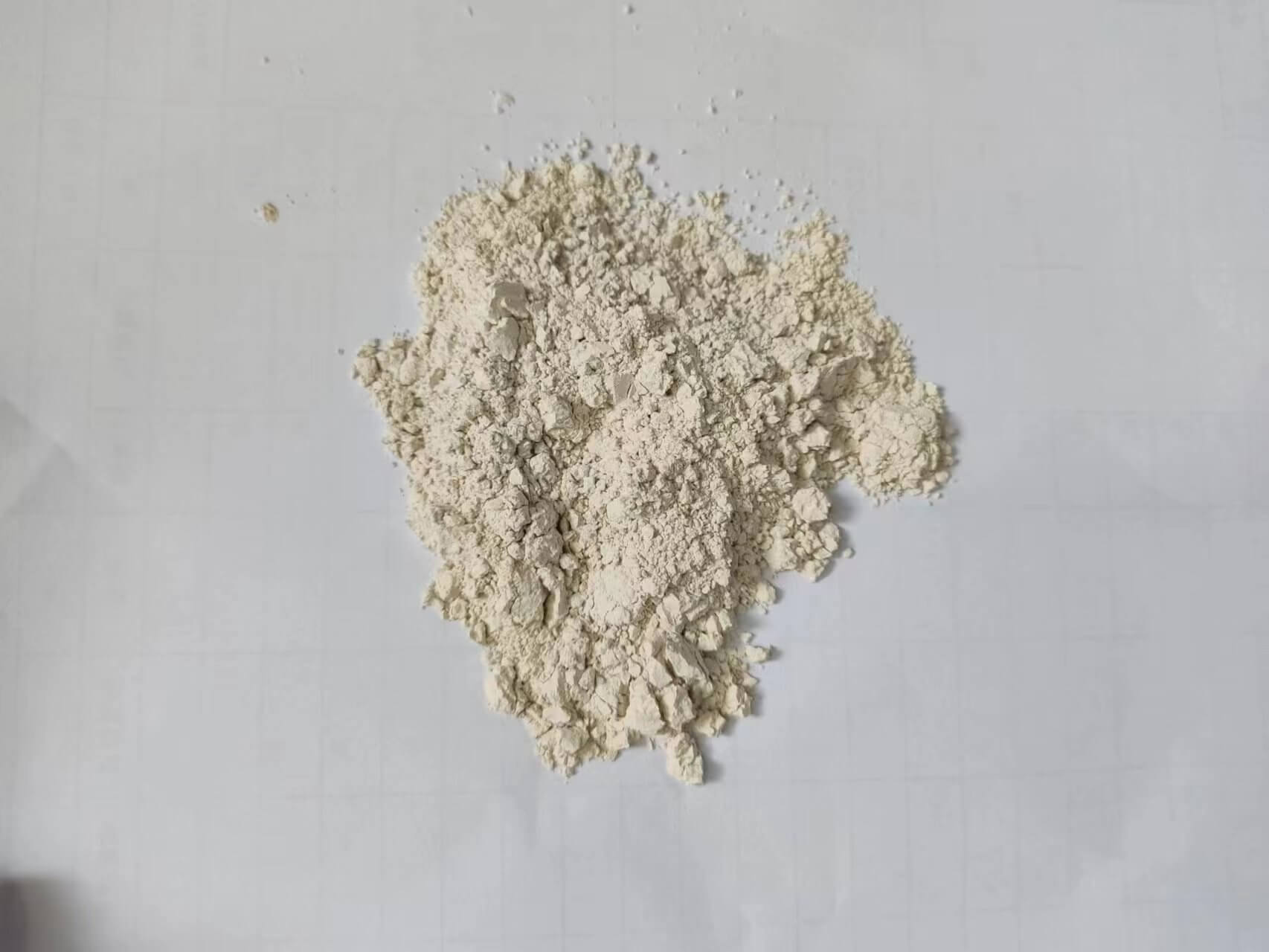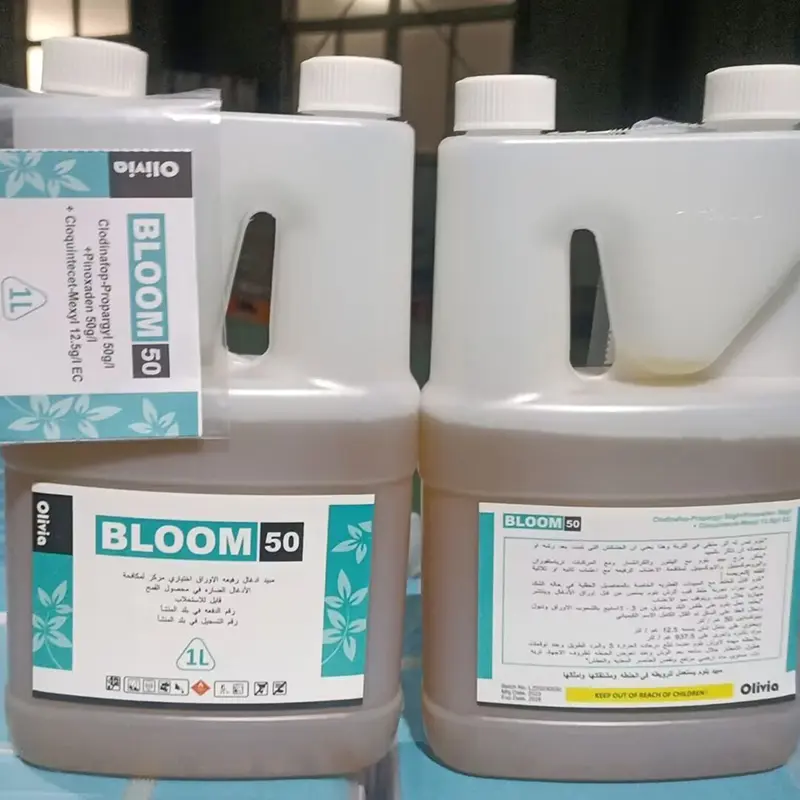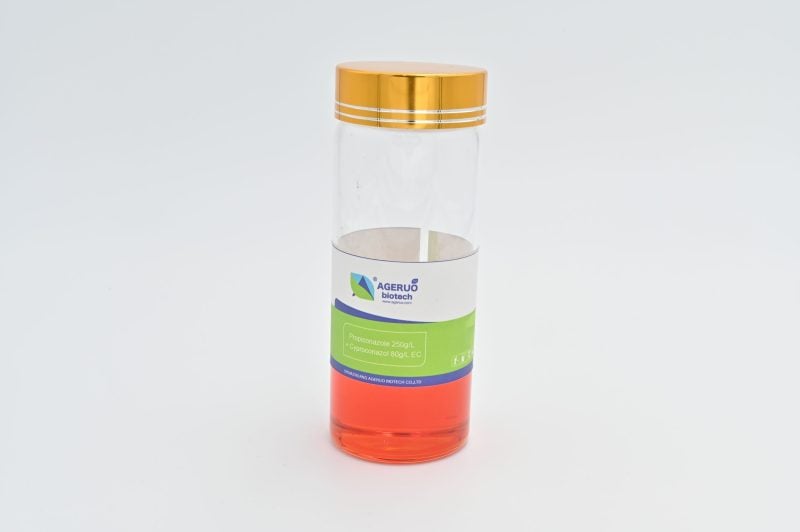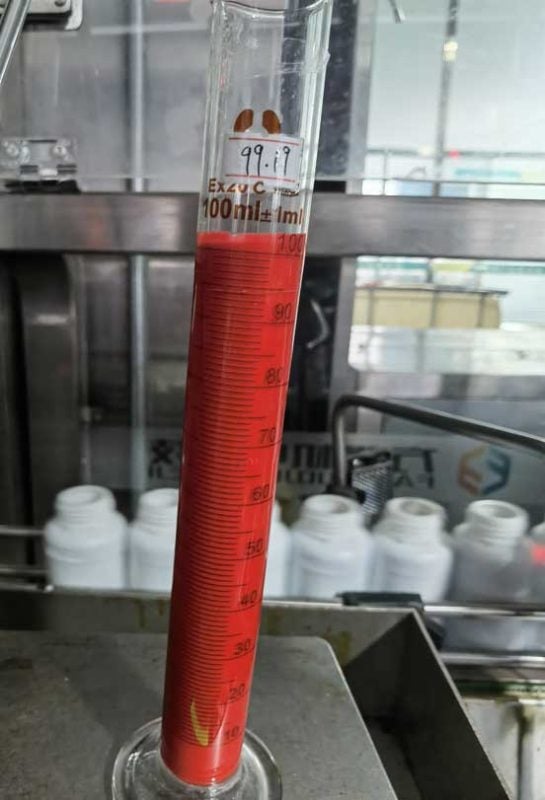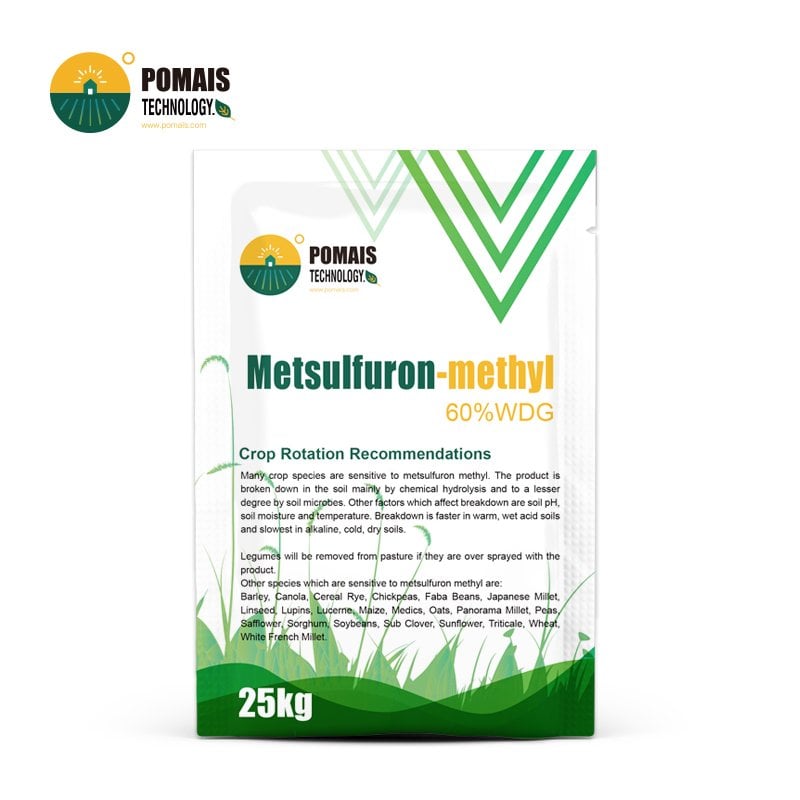Thiophanate-methyl Fungicide
Thiophanate-methyl Fungicide is a powerful systemic fungicide widely used in modern agriculture for preventive and curative control of fungal diseases. Belonging to the benzimidazole fungicide group, it offers broad-spectrum protection against pathogens such as scab, sheath blight, rice blast, powdery mildew, and more. It is especially suitable for high-value crops like fruit trees, rice, wheat, peanuts, cotton, and vegetables, helping maintain plant health and improve yield.
This product works by inhibiting fungal cell division at the mitosis level, making it effective even after infection begins. With systemic movement within plant tissues, it ensures deep protection, not just surface control.
At POMAIS, we provide Thiophanate-methyl in a range of formulations including 70% WP, 50% WP, and 97% TC, suitable for foliar spray or seed treatment. We support full OEM and ODM services, allowing you to customize packaging, label design, and formulation to meet your market requirements. Our team ensures each order is produced under ISO-certified manufacturing with global logistics support.
This fungicide is available for bulk orders and professional buyers seeking reliable, long-term supply partnerships. Whether you are a regional distributor or agricultural input brand owner, we are ready to help build your product portfolio with high-quality, performance-driven solutions.
Let’s work together to deliver consistent crop protection results for your customers.
- Designed for Professional Buyers & Bulk Orders
- This product is available for business purchase and large-scale distribution.
- We support custom packaging, labeling, and formulation to meet your market needs.
- Let’s build your brand together.

About Thiophanate-methyl Fungicide
About Thiophanate-methyl Fungicide
| Product Name | Thiophanate-methyl Fungicide |
| Active Ingredient | Thiophanate-methyl |
| Chemical Class | Benzimidazole |
| CAS Number | 23564-05-8 |
| Molecular Formula | C₁₂H₁₄N₄O₄S₂ |
| Mode of Action | Systemic, Preventive and Curative Action via Fungal Mitosis Inhibition |
| Formulations Available | 70% WP, 50% WP, 97% TC |
| Target Diseases | Sheath blight, rice blast, scab, powdery mildew, black spot, leaf mold |
| Applicable Crops | Rice, wheat, cotton, peanuts, fruit trees (apple, pear), tomatoes, melons |
| Application Method | Foliar spray, seed treatment |
| Recommended Dilution/Rate | 480–2145 g/ha or 1000–2000 times dilution depending on crop and disease |
| Packaging | 1kg bag, 5kg bag, 25kg drum, custom packaging available |
| Shelf Life | 2 years under proper storage conditions |
| Regulatory Support | Full COA, MSDS, ISO Certification, SGS Inspection Available |
Thiophanate methyl fungicide is an ideal choice for agricultural professionals seeking a trusted product with versatile disease control applications and strong compatibility across a range of crops and climates.
Mode of Action and Biological Efficacy
Thiophanate-methyl functions as a systemic, preventive, and curative fungicide, offering robust protection by targeting the cell division process in fungi. Upon application, it penetrates plant tissues and moves systemically to reach active infection sites or protect new growth.
How It Works:
Thiophanate-methyl is metabolized inside the plant into methyl benzimidazole carbamate (MBC), a compound that inhibits fungal mitosis by blocking spindle formation during cell division. This disruption prevents fungal spores from germinating and halts the spread of established infections.
Systemic Protection:
Once inside the plant, thiophanate-methyl translocates through both xylem and adjacent tissues, making it effective not only at the point of contact but throughout the leaf or stem. This systemic activity makes it suitable for preventive and early curative applications, even under moderate disease pressure.
Targeted Disease Suppression:
- Prevents spore germination in surface-infecting fungi
- Stops fungal mycelium development within tissues
- Limits secondary infection and disease spread
- Reduces fungal reproduction, helping break the infection cycle
Thanks to its broad-spectrum mode of action, Thiophanate-methyl is effective against a wide range of pathogens across different climatic and cropping conditions. It provides stable control under humid environments, where fungal pressure is high and reinfection risk is elevated.
Application Instructions and Recommended Dosage
Thiophanate-methyl is suitable for foliar spraying and seed treatment, depending on crop type and disease pressure. It should be applied at the first sign of disease or during early growth stages to prevent fungal establishment and reduce yield losses.
| Crop | Target Disease | Dosage | Application Method |
|---|---|---|---|
| Rice | Sheath blight, rice blast | 1500–2145 g/ha | Foliar spray |
| Wheat | Scab | 1065–1500 g/ha | Foliar spray |
| Pear Tree | Scab | 1600–2000 times dilution | Foliar spray |
| Apple Tree | Ring disease | 1000 times dilution | Foliar spray |
| Tomato | Leaf mold | 540–810 g/ha | Foliar spray |
| Melon | Powdery mildew | 480–720 g/ha | Foliar spray |
| Sweet Potato | Black spot | 1600–2000 times dilution | Seed soaking |
Timing and Frequency:
- Begin application before the onset of visible symptoms for maximum preventive benefit.
- Repeat every 7 to 14 days, depending on disease pressure and environmental conditions.
Best Practices:
- Ensure uniform spray coverage, especially on the lower leaf surface and inner canopy.
- Avoid applications during intense sunlight or high temperatures above 35°C.
- Do not apply immediately before heavy rainfall to avoid runoff.
This flexible dosage range and application adaptability make Thiophanate-methyl a dependable tool for growers managing high-value crops prone to fungal attacks.
Advantages and Technical Highlights
Thiophanate-methyl offers a comprehensive range of benefits that make it a preferred fungicide in both preventive and curative crop protection programs. Its wide spectrum, systemic reach, and low phytotoxicity contribute to its strong performance across various farming systems.
1. Broad-Spectrum Disease Control
Effective against a diverse set of fungal pathogens, including ascomycetes, basidiomycetes, and deuteromycetes. Thiophanate-methyl controls:
- Sheath blight and rice blast in rice
- Powdery mildew and leaf mold in vegetables
- Scab and ring disease in fruit trees
- Fusarium-related diseases in wheat and peanuts
2. Systemic and Preventive Action
Once absorbed, the fungicide translocates through plant tissues, protecting both treated and new growth. Its systemic action ensures extended protection compared to surface-only contact fungicides.
3. Preventive and Curative Capability
Ideal for use in early preventive treatments, yet also delivers curative effects when applied at the first signs of infection. Its mitotic inhibition slows and suppresses disease progression, even in established infections.
4. Low Resistance Risk
As a benzimidazole fungicide, thiophanate-methyl acts on multiple biochemical pathways, reducing the likelihood of resistance development when used in rotation with other classes of fungicides.
5. Versatile Crop Compatibility
Thiophanate-methyl can be applied to:
- Cereal crops (rice, wheat)
- Horticultural crops (tomato, melon)
- Fruit trees (apple, pear)
- Root crops (sweet potato)
Its formulations are suitable for foliar, seed, and soil applications.
6. Improved Crop Vigor
In addition to disease control, thiophanate-methyl contributes to healthier foliage and more consistent yields due to its protection of critical growth stages.
Formulations, Packaging, and Custom Services
We offer Thiophanate-methyl in a range of high-performance formulations to suit diverse application needs and regulatory markets. Whether you’re targeting seed treatment, foliar application, or integrated crop programs, we provide the right product—and the right support—for your business.
Available Formulations:
- Thiophanate-methyl 70% WP (Wettable Powder) – Most popular formulation for foliar spraying across fruits, vegetables, and field crops.
- Thiophanate-methyl 50% WP – Balanced formulation for crops with moderate disease pressure.
- Thiophanate-methyl 97% TC (Technical Concentrate) – For formulation processing, bulk repackaging, or custom mixing in IPM programs.
All formulations are manufactured under strict quality standards and tested for stability, efficacy, and compatibility with standard agrochemical equipment.
Packaging Options:
We support full customization of packaging to match your market demands and branding requirements:
| Packaging Type | Options Available |
|---|---|
| Bags | 100g, 250g, 500g, 1kg, 5kg |
| Drums | 10kg, 25kg |
| Bottles (for SL/SC) | 100ml, 250ml, 500ml, 1L |
| Bulk Supply | Up to 1000kg for industrial use |
All packaging can be customized with your brand name, label design, and language requirements. Multi-layer liners and moisture-resistant materials ensure long shelf life and product stability during storage and transport.
OEM/ODM and White Label Support:
As a professional fungicide manufacturer, we provide complete B2B solutions including:
- OEM production based on your preferred formulations and concentrations.
- ODM services with custom branding, packaging, and regulatory compliance assistance.
- Support for local registration with technical documents: COA, MSDS, TDS, and label mockups.
Whether you are a regional distributor or launching your own crop protection brand, our team can help you deliver competitive products with confidence.
Usage Precautions and Environmental Safety
While Thiophanate-methyl is widely recognized for its safety and effectiveness, responsible handling and application are critical to ensure maximum efficacy and minimal environmental impact.
Application Safety:
- Protective Equipment: Operators should wear gloves, goggles, long-sleeved clothing, and respiratory protection when mixing or spraying.
- Avoid Inhalation and Contact: Minimize exposure to skin and eyes. Do not inhale dust during mixing or spraying.
- Spraying Conditions: Avoid application during high temperatures, strong winds, or rainy weather to prevent drift and wash-off.
Environmental Considerations:
- Aquatic Toxicity: Do not apply near water bodies or during irrigation to avoid contamination of streams, ponds, or drainage systems.
- Bee Protection: While not classified as highly toxic to bees, application should be avoided during flowering periods when pollinators are active.
- Residue and Pre-Harvest Intervals (PHI):
- Follow crop-specific PHIs, typically ranging from 7 to 14 days, to ensure residue compliance in food crops.
Storage and Disposal:
- Store in a cool, dry, and well-ventilated area, away from direct sunlight and moisture.
- Keep out of reach of children, animals, and unauthorized personnel.
- Empty containers should be triple-rinsed and disposed of according to local environmental regulations. Do not reuse packaging.
Legal and Regulatory Compliance:
- Our Thiophanate-methyl products comply with FAO standards, and documentation including COA, MSDS, TDS, and label registrations is available to support import and use in your region.
- Shelf life: Minimum 2 years under proper storage conditions.
By observing proper handling practices and respecting environmental guidelines, Thiophanate-methyl remains a safe and reliable fungicide for your professional agricultural operations.
Why Choose Us as Your Thiophanate-Methyl Supplier?
As a professional manufacturer and global supplier of thiophanate-methyl fungicide, we deliver not only high-performance products, but also flexible services tailored to your market.
Manufacturer Advantages:
- ISO-Certified Facilities: All production lines meet ISO 9001 and GMP standards, ensuring quality consistency and regulatory compliance.
- Reliable Formulations: We offer a full range of concentrations including 70% WP, 50% WP, and 97% TC, adaptable to your local registration and application needs.
- Advanced QA/QC Systems: Every batch is tested with HPLC and GC equipment for purity, particle size, and wetting properties.
Customization & Support:
- Packaging Options: From 1kg foil bags to 25kg fiber drums, we support custom packaging with your logo, language, and regulatory label.
- OEM & ODM Services: Whether you need your own brand or ready-to-sell bulk products, our team handles everything from design to delivery.
- Document Support: Full sets of documentation including COA, MSDS, TDS, ICAMA, and registration dossiers are available upon request.
Global Delivery & Communication:
- Door-to-Door Logistics: Efficient shipment to Asia, Africa, the Middle East, South America, and Eastern Europe with professional export handling.
- Multi-Language Service: Our team supports communication in English, Russian, Spanish, and Arabic to streamline your sourcing process.
- Stable Supply: With large-volume inventory and flexible production planning, we ensure uninterrupted supply for seasonal or urgent orders.
Choosing us as your thiophanate-methyl supplier means partnering with a factory that understands agricultural needs, market challenges, and branding demands.
Regional Application Guide for Thiophanate-Methyl Fungicide
1. East and Southeast Asia – Rice and Fruit Orchards
In rice-growing regions like China, Vietnam, and Thailand, Thiophanate-methyl is widely used to manage sheath blight and rice blast. The product is typically applied during tillering and booting stages, ensuring early protection of leaf sheaths and panicles. In fruit orchards, it is effective against apple scab and pear ring disease, especially during pre-bloom and petal fall stages.
- Recommended formulation: 70% WP
- Application: 1500–2145 g/ha via foliar spray
- Key diseases: Sheath blight, rice blast, scab, ring disease
2. Middle East & North Africa – Tomatoes, Cucurbits, Grapes
In dry, semi-arid regions, tomato leaf mold, anthracnose, and powdery mildew in melons are prevalent. Thiophanate-methyl offers stable performance under high UV exposure and variable humidity. For grape growers in countries like Egypt or Morocco, it is an efficient option for black spot and downy mildew suppression, especially when tank-mixed with contact fungicides.
- Recommended formulation: 50% WP
- Application: 540–810 g/ha, repeated every 10–14 days
- Key diseases: Leaf mold, powdery mildew, black spot
3. Sub-Saharan Africa – Wheat, Groundnuts, Sweet Potatoes
In wheat-growing regions such as Ethiopia, Nigeria, and Kenya, thiophanate-methyl helps control scab and rust, often applied at heading or flowering stages. In root crops like sweet potatoes, seed soaking reduces black spot infection, improving tuber yield and market quality.
- Recommended formulation: 70% WP or 97% TC for premix
- Application: 1065–1500 g/ha (foliar); seed soak for black spot
- Key diseases: Scab, rust, black spot
4. South America – Apples, Melons, Tomatoes
In temperate and tropical areas such as Brazil, Chile, and Argentina, thiophanate-methyl is widely adopted in orchard management programs. It controls apple ring disease and melon powdery mildew, providing curative protection when alternated with strobilurins or triazoles. Local guidelines may require shorter intervals during humid seasons.
- Recommended formulation: 70% WP
- Application: 1000–1600x dilution or 720 g/ha foliar
- Key diseases: Ring disease, powdery mildew, anthracnose
5. Eastern Europe & Central Asia – Cereals and Field Crops
In regions like Ukraine, Kazakhstan, and Russia, wheat and barley are susceptible to scab and leaf spot, especially under wet spring conditions. Thiophanate-methyl is compatible with major cereal fungicide programs, either as a stand-alone or in alternation with azoles.
- Recommended formulation: 70% WP
- Application: 1000–1500 g/ha
- Key diseases: Scab, septoria, leaf blotch
Related Products & Cross-Sell Suggestions
When designing your crop protection program, Thiophanate-methyl can be enhanced through strategic combinations or alternations with compatible fungicides. Below are recommended related products that either complement its spectrum or broaden resistance management strategies:
1. Chlorothalonil + Thiophanate-methyl Mixture
- Use Case: Widely used in fruit trees and vegetables for early blight, leaf spot, and scab.
- Benefit: Combines systemic activity (thiophanate-methyl) with contact protection (chlorothalonil), offering dual-site protection.
2. Propiconazole or Difenoconazole
- Use Case: For cereals, grapes, and tropical fruit trees prone to powdery mildew or rusts.
- Benefit: Rotational partner to manage resistance; belongs to a different fungicide class (triazoles).
- Best Practice: Alternate with thiophanate-methyl every 7–10 days under disease pressure.
3. Mancozeb Fungicide
- Use Case: Tank-mix with thiophanate-methyl in wet conditions to boost surface protection on broadleaf vegetables and potato crops.
- Benefit: Adds preventive barrier to systemic protection; low cost and wide compatibility.
4. Azoxystrobin or Pyraclostrobin
- Use Case: Suitable for inclusion in high-value crop programs like grapes, tomatoes, and peanuts.
- Function: Provides curative and anti-sporulant effects, ideal for rotation with thiophanate-methyl for season-long control.
5. Tebuconazole + Sulfur Products
- Use Case: For use in orchards and melons during sensitive flowering and fruiting stages.
- Note: These combinations help manage secondary pathogens and minimize phytotoxicity when temperatures are high.
Need Custom Advice?
We offer full technical support and can help you build tailored crop protection schedules, whether you’re targeting a single disease or planning an integrated program for multi-crop farms.
Packaging and OEM Options
As a trusted thiophanate methyl manufacturer and global supplier, we offer a wide range of customized packaging solutions tailored to your market needs, regulatory standards, and distribution preferences. Our facilities are ISO-certified, and all batches undergo stringent quality control for consistency, purity, and shelf-life.
Available Packaging Types
| Packaging Type | Standard Sizes | Material | Notes |
|---|---|---|---|
| Bag (for WP) | 100g, 500g, 1kg, 5kg | Aluminum foil/PE | Moisture-proof, resealable |
| Drum (bulk WP) | 25kg, 50kg | Fiber or plastic | Suitable for large distributors |
| Bottle (for SC/SL) | 100ml, 250ml, 500ml, 1L | HDPE or PET | Leak-proof, label-customizable |
| Carton/Box | As per client request | Corrugated Paper | For combined shipment and export |
OEM/ODM Capabilities
We provide full-service OEM (Original Equipment Manufacturer) and ODM (Original Design Manufacturer) support for:
- Private Labeling with custom logos, label language, and barcode
- Formulation customization based on local crop, climate, or regulatory needs
- Bottle and cap customization, including tamper-evident and child-safe closures
- Multilingual compliance packaging for Europe, Asia, Africa, and Latin America
Logistics & Export Support
- Flexible MOQ for pilot markets
- Export documents: COA, MSDS, TDS, SGS, Free Sale Certificates
- Shipping modes: LCL, FCL, air cargo, courier dispatch for samples
- Door-to-port and door-to-door services in over 50 countries
Safety Measures and Environmental Considerations
When applying Thiophanate-methyl fungicide, it is essential to follow appropriate safety protocols to protect users, non-target organisms, and the environment. As a systemic benzimidazole fungicide, it is considered moderately hazardous when misused but remains safe under labeled conditions.
User Safety Guidelines
- Always wear protective clothing, including gloves, goggles, and masks, when mixing or spraying.
- Avoid skin contact and inhalation during preparation and application.
- Do not eat, drink, or smoke while handling the product.
- Wash thoroughly after handling, especially before meals or restroom use.
- Store away from food, feed, or household items in a dry, locked facility.
Environmental Precautions
- Toxic to aquatic organisms: Avoid application near ponds, rivers, or water sources. Do not wash equipment in surface water.
- Use buffer zones between treated fields and ecologically sensitive areas.
- Avoid overuse or misuse to prevent environmental accumulation and resistance buildup.
- Do not apply under high wind or during rainfall to minimize spray drift and runoff.
Storage and Disposal
- Store below 30°C in original, sealed containers, away from direct sunlight or flame sources.
- Do not reuse empty containers. Follow local hazardous waste regulations for disposal.
- In case of accidental spill, contain with absorbent material and clean using non-water-based methods.
Regulatory Compliance
Thiophanate-methyl is approved in many countries with maximum residue limits (MRLs) defined for different crops. Always refer to local agricultural and environmental safety guidelines to ensure compliance with relevant legislation.
FAQ: Comprehensive Guide to Thiophanate Methyl
| Product Name | Thiophanate-methyl Fungicide |
| Active Ingredient | Thiophanate-methyl |
| Chemical Class | Benzimidazole |
| CAS Number | 23564-05-8 |
| Molecular Formula | C₁₂H₁₄N₄O₄S₂ |
| Mode of Action | Systemic, Preventive and Curative Action via Fungal Mitosis Inhibition |
| Formulations Available | 70% WP, 50% WP, 97% TC |
| Target Diseases | Sheath blight, rice blast, scab, powdery mildew, black spot, leaf mold |
| Applicable Crops | Rice, wheat, cotton, peanuts, fruit trees (apple, pear), tomatoes, melons |
| Application Method | Foliar spray, seed treatment |
| Recommended Dilution/Rate | 480–2145 g/ha or 1000–2000 times dilution depending on crop and disease |
| Packaging | 1kg bag, 5kg bag, 25kg drum, custom packaging available |
| Shelf Life | 2 years under proper storage conditions |
| Regulatory Support | Full COA, MSDS, ISO Certification, SGS Inspection Available |
Thiophanate methyl fungicide is an ideal choice for agricultural professionals seeking a trusted product with versatile disease control applications and strong compatibility across a range of crops and climates.
Mode of Action and Biological Efficacy
Thiophanate-methyl functions as a systemic, preventive, and curative fungicide, offering robust protection by targeting the cell division process in fungi. Upon application, it penetrates plant tissues and moves systemically to reach active infection sites or protect new growth.
How It Works:
Thiophanate-methyl is metabolized inside the plant into methyl benzimidazole carbamate (MBC), a compound that inhibits fungal mitosis by blocking spindle formation during cell division. This disruption prevents fungal spores from germinating and halts the spread of established infections.
Systemic Protection:
Once inside the plant, thiophanate-methyl translocates through both xylem and adjacent tissues, making it effective not only at the point of contact but throughout the leaf or stem. This systemic activity makes it suitable for preventive and early curative applications, even under moderate disease pressure.
Targeted Disease Suppression:
- Prevents spore germination in surface-infecting fungi
- Stops fungal mycelium development within tissues
- Limits secondary infection and disease spread
- Reduces fungal reproduction, helping break the infection cycle
Thanks to its broad-spectrum mode of action, Thiophanate-methyl is effective against a wide range of pathogens across different climatic and cropping conditions. It provides stable control under humid environments, where fungal pressure is high and reinfection risk is elevated.
Application Instructions and Recommended Dosage
Thiophanate-methyl is suitable for foliar spraying and seed treatment, depending on crop type and disease pressure. It should be applied at the first sign of disease or during early growth stages to prevent fungal establishment and reduce yield losses.
| Crop | Target Disease | Dosage | Application Method |
|---|---|---|---|
| Rice | Sheath blight, rice blast | 1500–2145 g/ha | Foliar spray |
| Wheat | Scab | 1065–1500 g/ha | Foliar spray |
| Pear Tree | Scab | 1600–2000 times dilution | Foliar spray |
| Apple Tree | Ring disease | 1000 times dilution | Foliar spray |
| Tomato | Leaf mold | 540–810 g/ha | Foliar spray |
| Melon | Powdery mildew | 480–720 g/ha | Foliar spray |
| Sweet Potato | Black spot | 1600–2000 times dilution | Seed soaking |
Timing and Frequency:
- Begin application before the onset of visible symptoms for maximum preventive benefit.
- Repeat every 7 to 14 days, depending on disease pressure and environmental conditions.
Best Practices:
- Ensure uniform spray coverage, especially on the lower leaf surface and inner canopy.
- Avoid applications during intense sunlight or high temperatures above 35°C.
- Do not apply immediately before heavy rainfall to avoid runoff.
This flexible dosage range and application adaptability make Thiophanate-methyl a dependable tool for growers managing high-value crops prone to fungal attacks.
Advantages and Technical Highlights
Thiophanate-methyl offers a comprehensive range of benefits that make it a preferred fungicide in both preventive and curative crop protection programs. Its wide spectrum, systemic reach, and low phytotoxicity contribute to its strong performance across various farming systems.
1. Broad-Spectrum Disease Control
Effective against a diverse set of fungal pathogens, including ascomycetes, basidiomycetes, and deuteromycetes. Thiophanate-methyl controls:
- Sheath blight and rice blast in rice
- Powdery mildew and leaf mold in vegetables
- Scab and ring disease in fruit trees
- Fusarium-related diseases in wheat and peanuts
2. Systemic and Preventive Action
Once absorbed, the fungicide translocates through plant tissues, protecting both treated and new growth. Its systemic action ensures extended protection compared to surface-only contact fungicides.
3. Preventive and Curative Capability
Ideal for use in early preventive treatments, yet also delivers curative effects when applied at the first signs of infection. Its mitotic inhibition slows and suppresses disease progression, even in established infections.
4. Low Resistance Risk
As a benzimidazole fungicide, thiophanate-methyl acts on multiple biochemical pathways, reducing the likelihood of resistance development when used in rotation with other classes of fungicides.
5. Versatile Crop Compatibility
Thiophanate-methyl can be applied to:
- Cereal crops (rice, wheat)
- Horticultural crops (tomato, melon)
- Fruit trees (apple, pear)
- Root crops (sweet potato)
Its formulations are suitable for foliar, seed, and soil applications.
6. Improved Crop Vigor
In addition to disease control, thiophanate-methyl contributes to healthier foliage and more consistent yields due to its protection of critical growth stages.
Formulations, Packaging, and Custom Services
We offer Thiophanate-methyl in a range of high-performance formulations to suit diverse application needs and regulatory markets. Whether you’re targeting seed treatment, foliar application, or integrated crop programs, we provide the right product—and the right support—for your business.
Available Formulations:
- Thiophanate-methyl 70% WP (Wettable Powder) – Most popular formulation for foliar spraying across fruits, vegetables, and field crops.
- Thiophanate-methyl 50% WP – Balanced formulation for crops with moderate disease pressure.
- Thiophanate-methyl 97% TC (Technical Concentrate) – For formulation processing, bulk repackaging, or custom mixing in IPM programs.
All formulations are manufactured under strict quality standards and tested for stability, efficacy, and compatibility with standard agrochemical equipment.
Packaging Options:
We support full customization of packaging to match your market demands and branding requirements:
| Packaging Type | Options Available |
|---|---|
| Bags | 100g, 250g, 500g, 1kg, 5kg |
| Drums | 10kg, 25kg |
| Bottles (for SL/SC) | 100ml, 250ml, 500ml, 1L |
| Bulk Supply | Up to 1000kg for industrial use |
All packaging can be customized with your brand name, label design, and language requirements. Multi-layer liners and moisture-resistant materials ensure long shelf life and product stability during storage and transport.
OEM/ODM and White Label Support:
As a professional fungicide manufacturer, we provide complete B2B solutions including:
- OEM production based on your preferred formulations and concentrations.
- ODM services with custom branding, packaging, and regulatory compliance assistance.
- Support for local registration with technical documents: COA, MSDS, TDS, and label mockups.
Whether you are a regional distributor or launching your own crop protection brand, our team can help you deliver competitive products with confidence.
Usage Precautions and Environmental Safety
While Thiophanate-methyl is widely recognized for its safety and effectiveness, responsible handling and application are critical to ensure maximum efficacy and minimal environmental impact.
Application Safety:
- Protective Equipment: Operators should wear gloves, goggles, long-sleeved clothing, and respiratory protection when mixing or spraying.
- Avoid Inhalation and Contact: Minimize exposure to skin and eyes. Do not inhale dust during mixing or spraying.
- Spraying Conditions: Avoid application during high temperatures, strong winds, or rainy weather to prevent drift and wash-off.
Environmental Considerations:
- Aquatic Toxicity: Do not apply near water bodies or during irrigation to avoid contamination of streams, ponds, or drainage systems.
- Bee Protection: While not classified as highly toxic to bees, application should be avoided during flowering periods when pollinators are active.
- Residue and Pre-Harvest Intervals (PHI):
- Follow crop-specific PHIs, typically ranging from 7 to 14 days, to ensure residue compliance in food crops.
Storage and Disposal:
- Store in a cool, dry, and well-ventilated area, away from direct sunlight and moisture.
- Keep out of reach of children, animals, and unauthorized personnel.
- Empty containers should be triple-rinsed and disposed of according to local environmental regulations. Do not reuse packaging.
Legal and Regulatory Compliance:
- Our Thiophanate-methyl products comply with FAO standards, and documentation including COA, MSDS, TDS, and label registrations is available to support import and use in your region.
- Shelf life: Minimum 2 years under proper storage conditions.
By observing proper handling practices and respecting environmental guidelines, Thiophanate-methyl remains a safe and reliable fungicide for your professional agricultural operations.
Why Choose Us as Your Thiophanate-Methyl Supplier?
As a professional manufacturer and global supplier of thiophanate-methyl fungicide, we deliver not only high-performance products, but also flexible services tailored to your market.
Manufacturer Advantages:
- ISO-Certified Facilities: All production lines meet ISO 9001 and GMP standards, ensuring quality consistency and regulatory compliance.
- Reliable Formulations: We offer a full range of concentrations including 70% WP, 50% WP, and 97% TC, adaptable to your local registration and application needs.
- Advanced QA/QC Systems: Every batch is tested with HPLC and GC equipment for purity, particle size, and wetting properties.
Customization & Support:
- Packaging Options: From 1kg foil bags to 25kg fiber drums, we support custom packaging with your logo, language, and regulatory label.
- OEM & ODM Services: Whether you need your own brand or ready-to-sell bulk products, our team handles everything from design to delivery.
- Document Support: Full sets of documentation including COA, MSDS, TDS, ICAMA, and registration dossiers are available upon request.
Global Delivery & Communication:
- Door-to-Door Logistics: Efficient shipment to Asia, Africa, the Middle East, South America, and Eastern Europe with professional export handling.
- Multi-Language Service: Our team supports communication in English, Russian, Spanish, and Arabic to streamline your sourcing process.
- Stable Supply: With large-volume inventory and flexible production planning, we ensure uninterrupted supply for seasonal or urgent orders.
Choosing us as your thiophanate-methyl supplier means partnering with a factory that understands agricultural needs, market challenges, and branding demands.
Regional Application Guide for Thiophanate-Methyl Fungicide
1. East and Southeast Asia – Rice and Fruit Orchards
In rice-growing regions like China, Vietnam, and Thailand, Thiophanate-methyl is widely used to manage sheath blight and rice blast. The product is typically applied during tillering and booting stages, ensuring early protection of leaf sheaths and panicles. In fruit orchards, it is effective against apple scab and pear ring disease, especially during pre-bloom and petal fall stages.
- Recommended formulation: 70% WP
- Application: 1500–2145 g/ha via foliar spray
- Key diseases: Sheath blight, rice blast, scab, ring disease
2. Middle East & North Africa – Tomatoes, Cucurbits, Grapes
In dry, semi-arid regions, tomato leaf mold, anthracnose, and powdery mildew in melons are prevalent. Thiophanate-methyl offers stable performance under high UV exposure and variable humidity. For grape growers in countries like Egypt or Morocco, it is an efficient option for black spot and downy mildew suppression, especially when tank-mixed with contact fungicides.
- Recommended formulation: 50% WP
- Application: 540–810 g/ha, repeated every 10–14 days
- Key diseases: Leaf mold, powdery mildew, black spot
3. Sub-Saharan Africa – Wheat, Groundnuts, Sweet Potatoes
In wheat-growing regions such as Ethiopia, Nigeria, and Kenya, thiophanate-methyl helps control scab and rust, often applied at heading or flowering stages. In root crops like sweet potatoes, seed soaking reduces black spot infection, improving tuber yield and market quality.
- Recommended formulation: 70% WP or 97% TC for premix
- Application: 1065–1500 g/ha (foliar); seed soak for black spot
- Key diseases: Scab, rust, black spot
4. South America – Apples, Melons, Tomatoes
In temperate and tropical areas such as Brazil, Chile, and Argentina, thiophanate-methyl is widely adopted in orchard management programs. It controls apple ring disease and melon powdery mildew, providing curative protection when alternated with strobilurins or triazoles. Local guidelines may require shorter intervals during humid seasons.
- Recommended formulation: 70% WP
- Application: 1000–1600x dilution or 720 g/ha foliar
- Key diseases: Ring disease, powdery mildew, anthracnose
5. Eastern Europe & Central Asia – Cereals and Field Crops
In regions like Ukraine, Kazakhstan, and Russia, wheat and barley are susceptible to scab and leaf spot, especially under wet spring conditions. Thiophanate-methyl is compatible with major cereal fungicide programs, either as a stand-alone or in alternation with azoles.
- Recommended formulation: 70% WP
- Application: 1000–1500 g/ha
- Key diseases: Scab, septoria, leaf blotch
Related Products & Cross-Sell Suggestions
When designing your crop protection program, Thiophanate-methyl can be enhanced through strategic combinations or alternations with compatible fungicides. Below are recommended related products that either complement its spectrum or broaden resistance management strategies:
1. Chlorothalonil + Thiophanate-methyl Mixture
- Use Case: Widely used in fruit trees and vegetables for early blight, leaf spot, and scab.
- Benefit: Combines systemic activity (thiophanate-methyl) with contact protection (chlorothalonil), offering dual-site protection.
2. Propiconazole or Difenoconazole
- Use Case: For cereals, grapes, and tropical fruit trees prone to powdery mildew or rusts.
- Benefit: Rotational partner to manage resistance; belongs to a different fungicide class (triazoles).
- Best Practice: Alternate with thiophanate-methyl every 7–10 days under disease pressure.
3. Mancozeb Fungicide
- Use Case: Tank-mix with thiophanate-methyl in wet conditions to boost surface protection on broadleaf vegetables and potato crops.
- Benefit: Adds preventive barrier to systemic protection; low cost and wide compatibility.
4. Azoxystrobin or Pyraclostrobin
- Use Case: Suitable for inclusion in high-value crop programs like grapes, tomatoes, and peanuts.
- Function: Provides curative and anti-sporulant effects, ideal for rotation with thiophanate-methyl for season-long control.
5. Tebuconazole + Sulfur Products
- Use Case: For use in orchards and melons during sensitive flowering and fruiting stages.
- Note: These combinations help manage secondary pathogens and minimize phytotoxicity when temperatures are high.
Need Custom Advice?
We offer full technical support and can help you build tailored crop protection schedules, whether you’re targeting a single disease or planning an integrated program for multi-crop farms.
Packaging and OEM Options
As a trusted thiophanate methyl manufacturer and global supplier, we offer a wide range of customized packaging solutions tailored to your market needs, regulatory standards, and distribution preferences. Our facilities are ISO-certified, and all batches undergo stringent quality control for consistency, purity, and shelf-life.
Available Packaging Types
| Packaging Type | Standard Sizes | Material | Notes |
|---|---|---|---|
| Bag (for WP) | 100g, 500g, 1kg, 5kg | Aluminum foil/PE | Moisture-proof, resealable |
| Drum (bulk WP) | 25kg, 50kg | Fiber or plastic | Suitable for large distributors |
| Bottle (for SC/SL) | 100ml, 250ml, 500ml, 1L | HDPE or PET | Leak-proof, label-customizable |
| Carton/Box | As per client request | Corrugated Paper | For combined shipment and export |
OEM/ODM Capabilities
We provide full-service OEM (Original Equipment Manufacturer) and ODM (Original Design Manufacturer) support for:
- Private Labeling with custom logos, label language, and barcode
- Formulation customization based on local crop, climate, or regulatory needs
- Bottle and cap customization, including tamper-evident and child-safe closures
- Multilingual compliance packaging for Europe, Asia, Africa, and Latin America
Logistics & Export Support
- Flexible MOQ for pilot markets
- Export documents: COA, MSDS, TDS, SGS, Free Sale Certificates
- Shipping modes: LCL, FCL, air cargo, courier dispatch for samples
- Door-to-port and door-to-door services in over 50 countries
Safety Measures and Environmental Considerations
When applying Thiophanate-methyl fungicide, it is essential to follow appropriate safety protocols to protect users, non-target organisms, and the environment. As a systemic benzimidazole fungicide, it is considered moderately hazardous when misused but remains safe under labeled conditions.
User Safety Guidelines
- Always wear protective clothing, including gloves, goggles, and masks, when mixing or spraying.
- Avoid skin contact and inhalation during preparation and application.
- Do not eat, drink, or smoke while handling the product.
- Wash thoroughly after handling, especially before meals or restroom use.
- Store away from food, feed, or household items in a dry, locked facility.
Environmental Precautions
- Toxic to aquatic organisms: Avoid application near ponds, rivers, or water sources. Do not wash equipment in surface water.
- Use buffer zones between treated fields and ecologically sensitive areas.
- Avoid overuse or misuse to prevent environmental accumulation and resistance buildup.
- Do not apply under high wind or during rainfall to minimize spray drift and runoff.
Storage and Disposal
- Store below 30°C in original, sealed containers, away from direct sunlight or flame sources.
- Do not reuse empty containers. Follow local hazardous waste regulations for disposal.
- In case of accidental spill, contain with absorbent material and clean using non-water-based methods.
Regulatory Compliance
Thiophanate-methyl is approved in many countries with maximum residue limits (MRLs) defined for different crops. Always refer to local agricultural and environmental safety guidelines to ensure compliance with relevant legislation.
FAQ: Comprehensive Guide to Thiophanate Methyl
Related Products
Latest News

